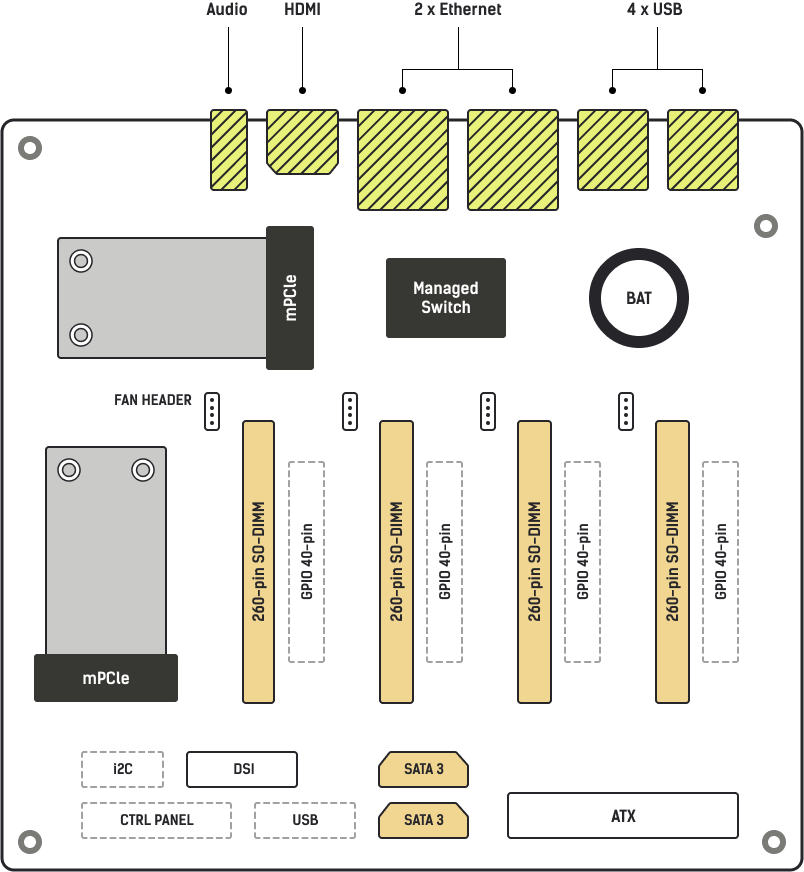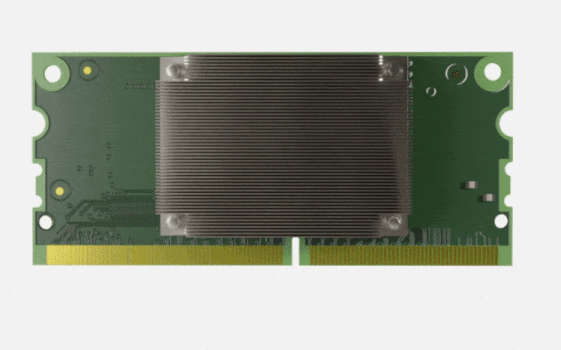Raspberry Pi Compute Module 4 Powers The Turing Pi 2
The low cost of the Raspberry Pi has disrupted many facets of general computing, but that also extends to cluster computing. Using a series of Raspberry Pi Model B boards is possible, but with the new range of Raspberry Pi Compute Modules, we can build clusters that offer the same or greater computational power while consuming less space. The Turing Pi 1 from Turing Machines used seven Compute Module 3+, but with the announcement of the Raspberry Pi Compute Module 4, the company has announced Turing Pi 2, which will support up to four Compute Module 4 boards.

Turing Pi 2 is a mini ITX-sized desktop cluster computer that you can configure with four Compute Module 4 (CM4) boards with up to 32GB of RAM. The Turing Pi 2 mainboard features connectors for Mini PCI Express, two SATA 3 ports, dual Gigabit Ethernet, an ATX power connector, HDMI out, and a connector for the official Raspberry Pi touchscreen. It also comes with four USB ports that are likely USB 3.0, though this is not known at the present time.
The CM4 uses a bespoke socket designed to allow the CM4 to interface with the official IO board and carrier boards that breakout connections for USB, Ethernet, and HDMI interfaces, etc. This connection is not compatible with the SO-DIMM slot interface used in prior Compute Module boards. For the Turing Pi 2, the team uses an adaptor board that converts the CM4 socket into the 260-pin SO-DIMM format.
You'll find a fan connector next to each slot on the main board, with fan speed being independently controlled for each module. Fans are useful for keeping the Compute Modules cool, as just like the Raspberry Pi 4, they are known to run hotter than previous models, especially when overclocked.

So what are the use cases for Turing Pi 2? If you're looking for consumer / commercial-grade edge infrastructure, with machines at the edge of your own networks offering quick and easy access, then Turing Pi 2 could be a low cost means to develop and prototype company-wide services.
If you need lots of power for an Arm workstation, then one of the Compute Modules can run your OS while the remaining are handed tasks and focus solely on those activities. That frees up the OS for other tasks.
Right now, there is no indication of price or availability for the Turing Pi 2, with a release date in 2021 being the only information given. There are more details on the Turing Pi website.
Get Tom's Hardware's best news and in-depth reviews, straight to your inbox.

Les Pounder is an associate editor at Tom's Hardware. He is a creative technologist and for seven years has created projects to educate and inspire minds both young and old. He has worked with the Raspberry Pi Foundation to write and deliver their teacher training program "Picademy".